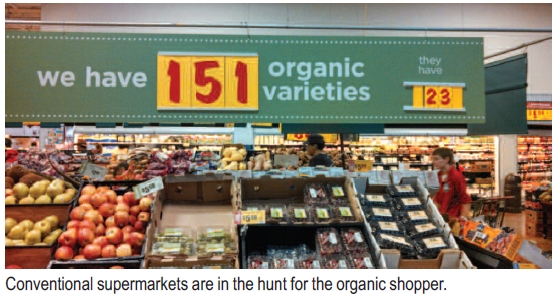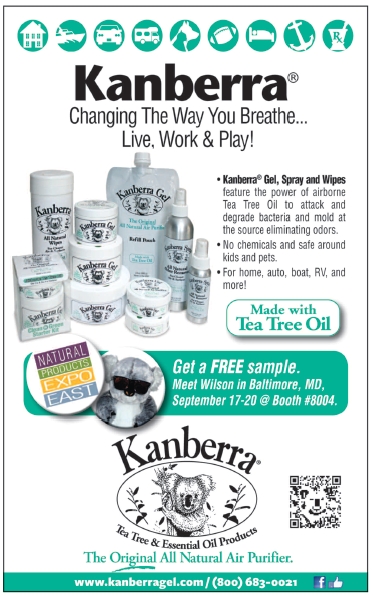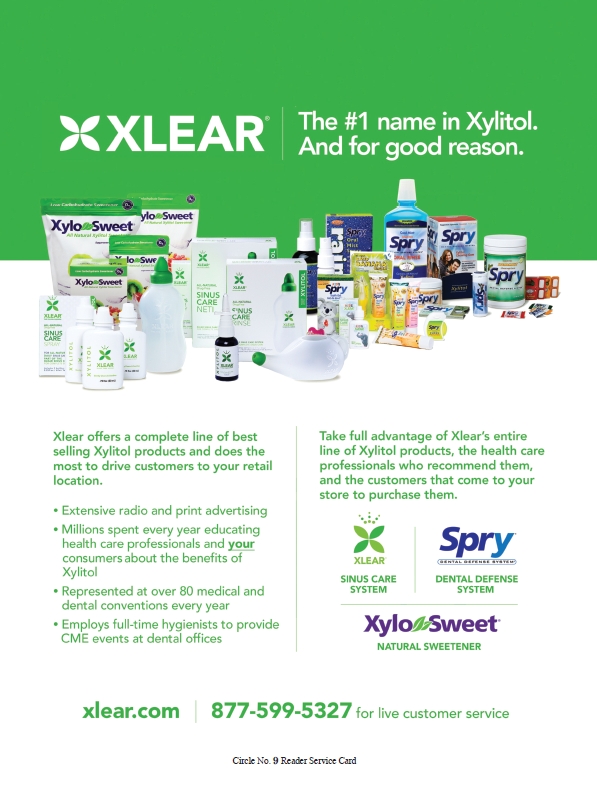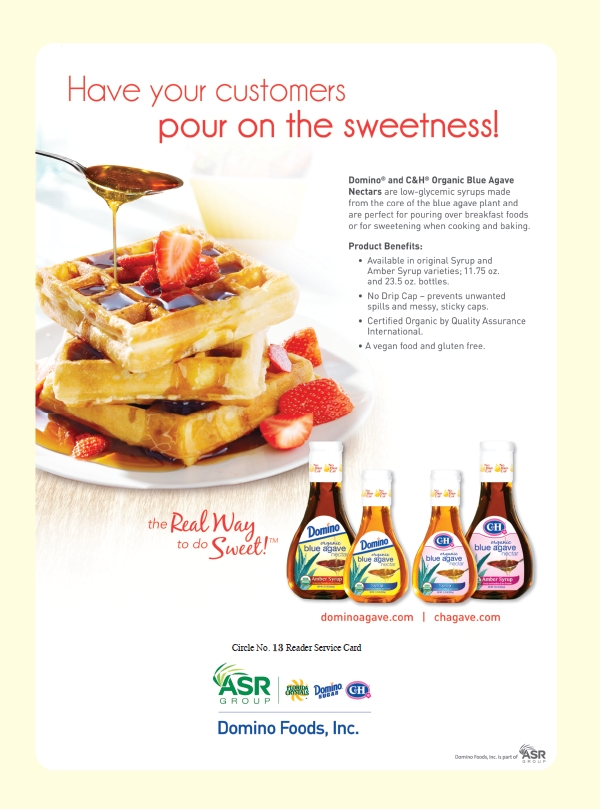Please take a careful look at the photo nearby. Notice the not-so-subtle LARGE numbers for the produce this conventional supermarket carries, and the teeny-weenie numbers for its “competitors.”
In my consulting work, my company, Retail Insights, helps independent natural products retailers determine the potential of markets in order to find the correct size for each store in each trade area. As part of this work, I travel to the city or town and walk all store aisles to measure the amount of natural and organic products each competitor carries. This includes direct competitors like other independents, vitamin chain stores, club stores, mass marketers, drug stores and conventional supermarkets.
The photo here is one I took during a recent market analysis for a client. This large conventional supermarket prominently posted this sign above its 44-foot gondola of fresh organic produce, and is more or less the first thing shoppers see as they enter the store. On the sign, who is the “they” that has only 23 SKUs of organic produce? When I asked the young produce stocker this question, he had to go ask his manager, and came back with a sheepish grin saying, “Our competition.” Well, okay. Of course, I knew it was the independent natural products retailer across the street with an eight-foot refrigerated produce case, and probably about 23 SKUs of fresh produce.

More than Just Produce
Walk around to the dairy cases in any large conventional supermarket today and you will likely find two, four and even six full doors of organic milk and non-dairy beverages, plus more open cases of natural and organic yogurts, cheeses, eggs and even butter. The offerings typically include both national brands and the supermarket’s private label, showing the new and deep commitment mainstream retailers have to competing in the natural and organic space.
Visit the meat and poultry cases and you’ll find more of the same. While not as vast as the produce or dairy offerings, conventional supermarkets nevertheless typically feature two to eight feet of fresh natural and organic meats and poultry.
Compare these offerings to the handful of SKUs of organic milk,  yogurt, eggs, meat and poultry at a typical independent natural products retail store and you realize, from a shopper’s perspective, there really is no comparison at all; conventional supermarkets win the race for selection and variety on three out of the three top fresh-food categories that drive shopper intentions to visit a particular store.
yogurt, eggs, meat and poultry at a typical independent natural products retail store and you realize, from a shopper’s perspective, there really is no comparison at all; conventional supermarkets win the race for selection and variety on three out of the three top fresh-food categories that drive shopper intentions to visit a particular store.
The Case Is Half Empty
Optimists say the cup is half full. But shoppers who see your half-empty produce case as soon as they enter your store recognize a half-hearted attempt—and get a not-so-subtle message—that you are less than fully committed to fresh foods.
Maybe you put in your produce case 10 years ago, when there was far less organic produce available at your local conventional supermarket. And maybe produce sold pretty well for you, at first, because you had a larger selection. The same is true for the other fresh perishables categories.
But, as conventional supermarkets increased space for fresh natural and organic products, your advantage wilted away. As I tour most independent natural products retailers today, it is clear that the typical supermarket has substantially more natural and organic offerings in all the fresh-food categories. So, what can you do?
Hard Choices
As an independent natural products retailer, your ability to continue to invest in your business is, by definition, less than that of larger competitors, many of which are public companies with multimillion-dollar-deep pockets. And it should be clear to all independents by now that these same large competitors are, in the aggregate, investing hundreds of millions in the natural and organic retail space to build new stores and to reset, refresh and expand existing stores.
If your store’s presentation has lost its edge  today, think what it will look like in a year or two if you don’t change. The harsh reality is, if you stand pat, the market will continue to move forward around you, leaving you further behind the newer, larger presentations of your competitors. While you may not be in danger of going out of business today, tomorrow or next year, your sales are unlikely to climb again without rethinking your strategy.
today, think what it will look like in a year or two if you don’t change. The harsh reality is, if you stand pat, the market will continue to move forward around you, leaving you further behind the newer, larger presentations of your competitors. While you may not be in danger of going out of business today, tomorrow or next year, your sales are unlikely to climb again without rethinking your strategy.
Weighing Your Options
How old are you? How much energy do you have left for driving your business forward? How long is your lease? These are some of the questions it makes sense to ask before making any strategic moves. Is there someone in your family willing and capable of taking over the business? Would it be realistic to sell the business to long-time employees? How much is your business worth today? With a flat or decreasing sales trend, what will it be worth next year?
If your answers to these questions seem to leave you with few options for advancing your business, then you may need to consider restructuring instead of expanding.
Dealing with Reality
If you are like most independent retailers, supplements continue to drive your profits. I say “profits” because the higher gross profit margins on supplements often allow independents to make more money—that is, bottom line net profits—from selling supplements than from selling foods, even though your gross food sales may be larger in dollar terms than your gross vitamin sales. If this is the case, why not consider scaling back?
 By eliminating understocked and underperforming perishables foods departments like produce and dairy, you’ll free up space that you can use to widen your aisles and create a more comfortable, relaxing atmosphere. Most independents have knowledgeable nutrition staff to help customers, and allowing more space for these interactions could actually boost your supplement sales; the most profitable department of your store, anyway.
By eliminating understocked and underperforming perishables foods departments like produce and dairy, you’ll free up space that you can use to widen your aisles and create a more comfortable, relaxing atmosphere. Most independents have knowledgeable nutrition staff to help customers, and allowing more space for these interactions could actually boost your supplement sales; the most profitable department of your store, anyway.
The Silver Lining
From my observations around the country, independents who stake out a clear position as the local supplement specialist, with high-touch, high-quality service are continuing to do just fine. Rather than suffer weak perishables sales, eliminate those departments, refresh your physical presentation and make your store an oasis for the shopper in search of help in achieving and maintaining well-being.
Instead of constantly feeling inferior to your larger fresh-foods competitors, feed off their customer flow, catering to those shoppers who need more attention, and more specific nutritional guidance. The number of people seeking alternative modalities is constantly increasing. Make your store the destination for these folks.
At the same time, recommit to hiring and paying well a knowledgeable staff. The credibility a registered nurse, nutritionist or other health practitioner can bring to your store will likely translate into higher dollar sales, and stickier customer relationships.
And, if you do have the desire and ability to grow, maybe you’ll be the next Sprouts Farmers Market! WF
Jay Jacobowitz is president and founder of Retail Insights®, a professional consulting service for natural products retailers established in 1998, and creator of Natural Insights for Well Being®, a comprehensive marketing service designed especially for independent natural products retailers. With 37 years of wholesale and retail industry experience, Jay has assisted in developing over 1,000 successful natural products retail stores in the U.S. and abroad. Jay is a popular author, educator, and speaker, and is the merchandising editor of WholeFoods Magazine, for which he writes Merchandising Insights and Tip of the Month. Jay also serves the Natural Products Association in several capacities. He can be reached at (800)328-0855 or via e-mail at jay@retailinsights.com.
Published in WholeFoods Magazine, September 2014










